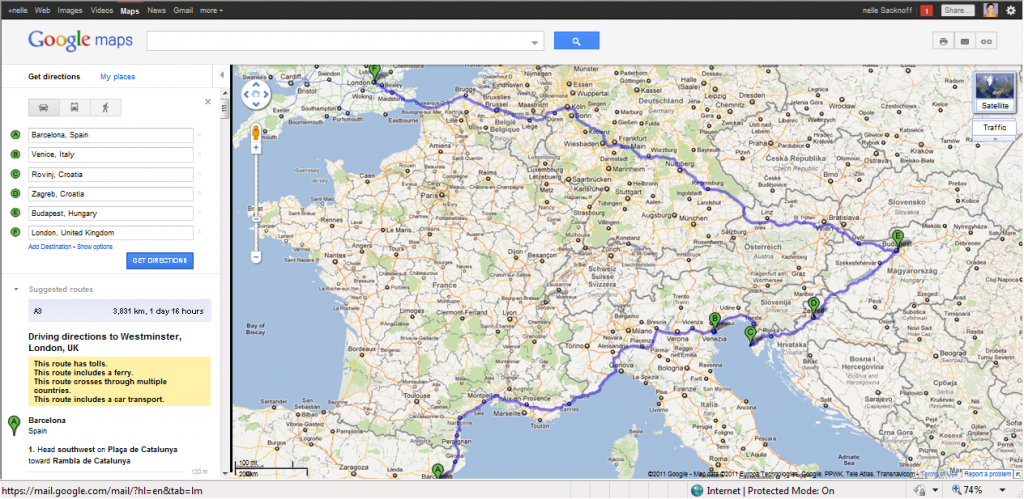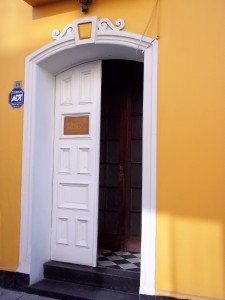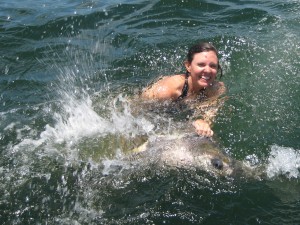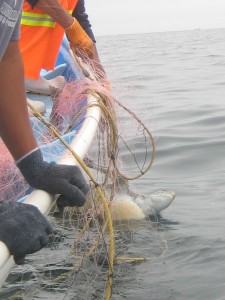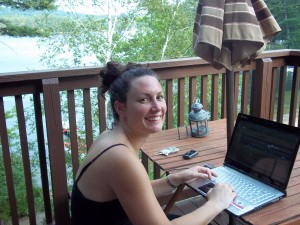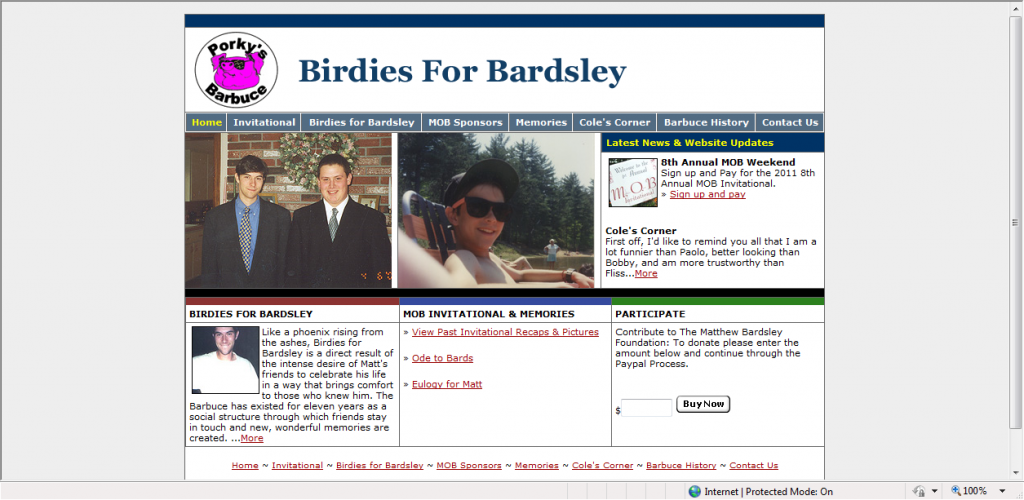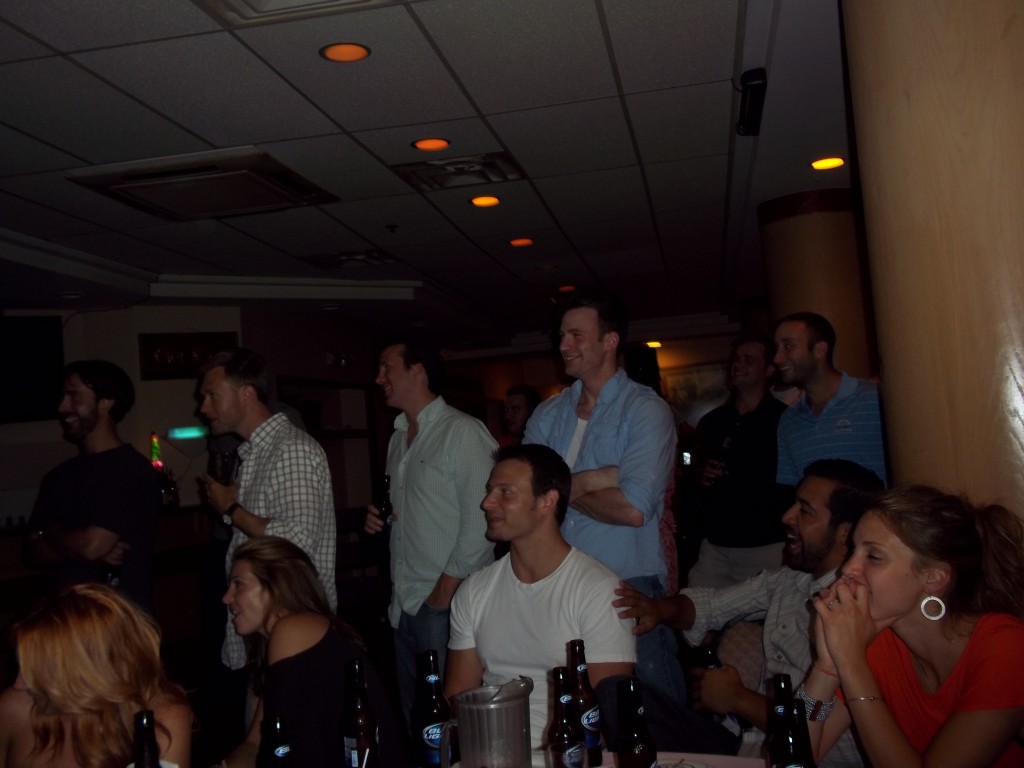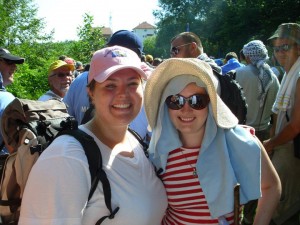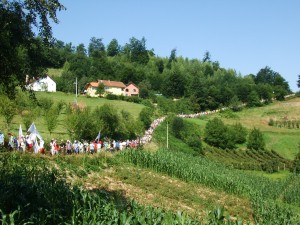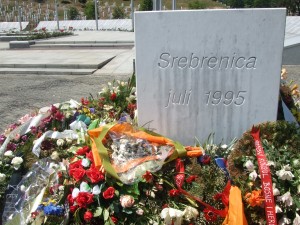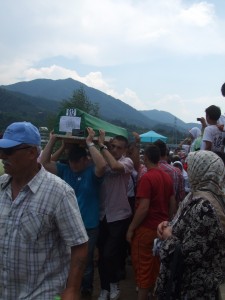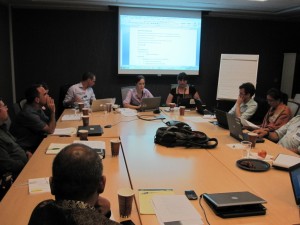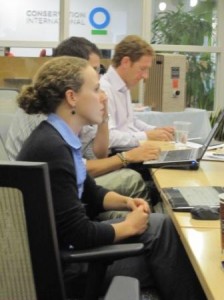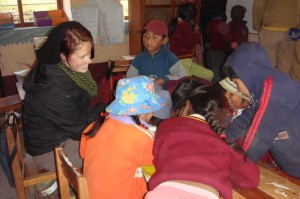
On Thursday morning, the health and wellness team, the ag team, and the newest addition to AASD, the photography team, set out at 5:30am for Pampacorral. The road to the rural Lares region of Peru is under construction, and therefore only open for two hours a day, at 6:00am and 6:00pm. Although this doesn’t compare to the 405 shutdown, it does cause for some inconvenience to Team Peru and the many people, trucks, and tourists that utilize the road each day.
Having bought out tickets the night before, Natalie and I had the honor of sitting in the very front of the truck. This little detail was important for two reasons. One, neither of us got car sick, which is a feat in and of itself. Two, we had the best view of the whole bus. Over the past couple of days we have watched a beautiful full moon rise over the mountains, but watching the sun come up from behind the morning fog and glisten off the snow at the top of the pass was something completely different and awe inspiring.
Just prior to arriving in Pampacorral, the bus picked up a few of the numerous children who were walking to school, seemingly in the middle of nowhere. I was amazed to see such small children walking so far, but even more startled when I later found out that most walk upwards of two hours to school everyday.
Pampacorral, one of the first communities that built a greenhouse, is a beautiful, quiet community nestled between the Andes Mountains next to the beautiful river. The streets are lined with indigenous women threading yarn, chickens, cows, laughing children, adobe houses, various rocks left over from a recent land slide.
While waiting for some veggies to be picked from the greenhouse for the nutritional class, the photography team and I made friends with a small group of rosy-cheeked seven year olds. They informed us their teacher was out of town and since the director was running around with ag team, they were left unattended. Without even thinking, we walked straight into the classroom with the kids and asked them to show us what they learning. For the next thirty minutes, we read their workbooks, practiced writing our names, drew on the whiteboard, and practiced adding. Then the director came to retrieve the photo team to teach their class, and I was left alone with a class of first graders.
I passed out some blank paper and asked them each to draw their houses. We did the exercise together, the kids drawing on the papers, while I drew the various objects on the white board. To practice writing and spelling, we also labeled everything in the picture. As I walked around the classroom, asking questions, learning Quechua, and complimenting drawings, I began to realize that many of the pictures looked the same. Sure, there were small differences in the size of the mountains, but the sun was always just peaking the range. Some of the fish were
smiling and the cats were in the choclo fields (a local type of corn), but the river always split the page in half. I thought perhaps the children were influenced by my drawing and didn’t question it.
After we had finished drawing and coloring, we sang a few songs in Spanish and Quechua, and the directorreturned. I told him about the fun drawing that we had collectively decided should be gifts to their parents. He responded by saying, “of course, they can take them home as soon as we grade them.” My original intention had been to constructively occupy their time, but I left having taught my first ever classroom lesson.
I returned to the photo team and was surprised to find that the eighth graders had been drawing as well. With a slightly different prompt, they had each drawn a smiling sun peaking out behind the mountains with a river cutting the page in half. I can only assume they are taught from a very early age “how” to draw their community and surroundings. Seeing that many of the children don’t know anything else for much of their lives, it seems fitting that the school would make sure they had a clear understanding of what’s around them.
My final interaction with the kids was purposefully playful and what I now consider to be my signature gift to the kids: bubbles. The primary school children and I blew and popped bubbles for thirty minutes of uninhibited, purely joyful fun. I’ll never get tired of hearing the laughter and seeing little hands bob up and down as they attempt to pop the vary highest bubbles being carried up by the wind.
When the jar of bubbles was gone and the children had returned to class, a few of us decided to take a beautiful hike down to the town of Lares to catch our bus. That final hour and a half in extremely rural Peru was a wonderful reminder to all of us the importance of being grateful for what we have, enjoying nature, and perhaps to be grateful for what we don’t have. ~Danielle
